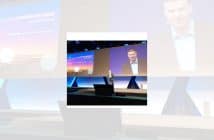New statistics from financial consultants Crowe Horwath show that profits and occupancy rates are improving across the board, though a distinctive gap is emerging between Dublin hotels and the rest of the country.
“Dublin is driving growth,” said Crowe Horwath partner Aiden Murphy.
“Dublin hotels are now operating at 74pc occupancy rates; that’s strong even by international standards. It’s allowing them to charge room rates above the norm – and since hotel costs like staff are mostly fixed, and don’t fluctuate in the way commodity costs do, any extra revenues translate directly into profit.”
The statistics are less kind to rural hotels. The average room rate in hotels along the west coast is just €61.87, down on 2010 rates and well below the Dublin average of €86.04.
“Hotels along the southern and western coast suffer from seasonality – these places are flooded in the summertime, but business dries up in the colder months,” said Mr Murphy.
“But there’s still sufficient demand to sustain the vast majority of hotels – closures will be few and far between.
“Only 4pc of all hotels have closed over the last two years even though a seminal 2008 report said 15pc needed to close to rebalance supply and demand.”
The recovery of the North American market has been particularly important for rural hotels. US customers accounted for nearly a tenth of all room stays in 2012.
US visitors and Irish staycationers alike can look forward to a flood of new hotels opening over the next three years.
Capital allowance rules in place between 1996 and 2007 granted new hotel owners a seven-year tax break, but that is close to expiring. Two fifths of all Irish hotels were built while the tax breaks were in place, so many of these will be put up for sale as owners lose their tax benefits.
Hotel sales also look increasingly likely given that some country hotels are priced at just a third of their replacement cost – meaning it costs three times as much to build a new hotel as to buy an existing one. This is a barrier to entry for new buildings, but great news for hotel owners interested in getting out of the business.
“There’s a pipeline of big new hotels on the way – The Marker in Dublin is just the first,” said Mr Murphy. “Several plans to convert office blocks into hotels have already been put forward, including the Commissioners of Irish Lights building in Dublin and the old Telecom Eireann building, Findlater House on O’Connell Street.”
A planning application to convert Dublin’s former Ormonde Hotel into a Tune hotel has also been lodged – this will offer a budget Ryanair-style service, where rooms cost very little but visitors pay extra for every additional service they use, a first for Ireland. Source: Irish Independent



